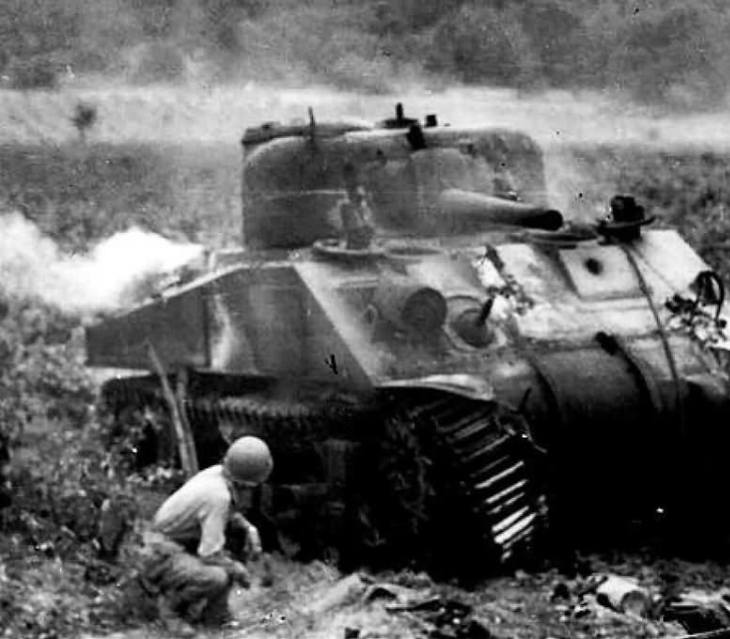
Then Battle of Sedan was won by by the Germans, despite heavy losses to the French Char B1 bis tanks. The XIX Army Corps crossed into Luxembourg on 10 May, and progressed through southern Belgium supported by the German Third Air Fleet. The XIX Army Corps became part of the German effort to trap the Allied troops with an attack through the Ardennes forest, devised by Erich von Manstein known as the sickle cut. The 1st Panzer Division under Friedrich Kirchner, the 2nd Panzer Division under Rudolf Veiel, the 10th Panzer Division under Ferdinand Schaal, and the Infantry Regiment Großdeutschland joined the XIX Army Corps, now under the command of Panzer Group Kleist. The XIX Army Corps was reorganized into the Western Campaign in May 1940, containing three Panzer Divisions. The unit received several commendations after the Polish campaign ended on 6 October, with Guderian himself awarded the Knight's Cross of the Iron Cross on 27 October. XIX Army Corps then represented Germany in the subsequent German–Soviet military parade in Brest-Litovsk. After the Soviet invasion of Poland, XIX Army Corps yielded control of the city to the Red Army, in line with the Molotov–Ribbentrop Pact, which they had unknowingly violated. The Battle of Brest-Litovsk followed soon after, with XIX Army Corps troops slowed but emerging victorious. Miscommunications with the infantry-based XXI Army Corps caused casualties and risked them being encircled by Polish forces. Von Bock instructed Guderian to set his sights onto Brest-Litovsk, deep in the Polish rear. Moved to operating east of the Vistula in support of the 3rd Army's left flank after the Battle of Różan, they were positioned to join in attacking Warsaw from the north but were hampered by the slow progress of Army Group South. Shirer as "sickening evidence of the carnage" and "symbolic of the brief Polish campaign"), prevented attempts by the Polish 9th Infantry Division and the Czersk Operational Group to recapture the Brda's east bank, was visited at the front by Adolf Hitler, Heinrich Himmler, and Erwin Rommel, and suffered casualties of 150 fatalities and 700 wounded. During the initial days of the Polish campaign, the XIX Army Corps captured the city of Pruszcz and a bridgehead east of the Brda river, inflicted massive casualties on the Polish Pomorska Cavalry Brigade (described by William L. Operations began on 1 September 1939, beginning World War II in Europe. Subordinated within Army Group North (responsible for Poland's north-western Danzig Corridor region) and supplemented by the 3rd Panzer, 2nd Infantry, and 20th Infantry Divisions, XIX Army Corps was tasked to strike southwards towards the Vistula river and thereby prevent any eastwards retreat of Polish troops to its west. It was officially tasked with constructing fortifications in preparation for an attack from Polish forces, though in fact German preparations for the invasion were already well advanced. Commanded by General der Panzertruppe Heinz Guderian, it was stationed in Pomerania prior to taking part in the invasion of Poland. It was formed in Vienna on 1 July 1939, the same day as the 2nd Panzer Division, but was not assigned to any single military district. It took part in the Invasion of Poland and the Battle of France. Armeekorps) was an armored corps of the German Wehrmacht between 1 July 1939 and 16 November 1940, when the unit was renamed Panzer Group 2 (German: Panzergruppe 2) and later 2nd Panzer Army (German: 2.

For the XIX Army Corps during the First World War, see XIX (2nd Royal Saxon) Corps.

For the XIX Mountain Army Corps from 1942 forward, see Mountain Corps Norway. This article is about XIX Army Corps of 1939 to 1940.


 0 kommentar(er)
0 kommentar(er)
